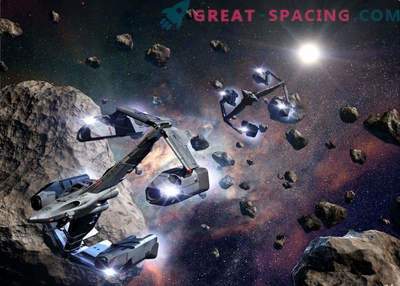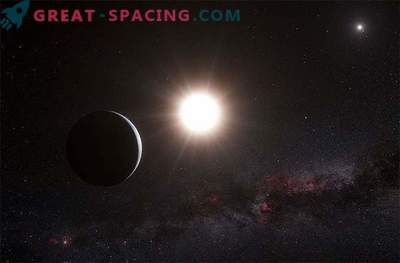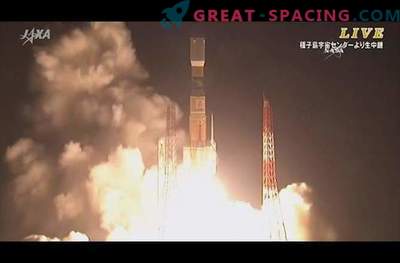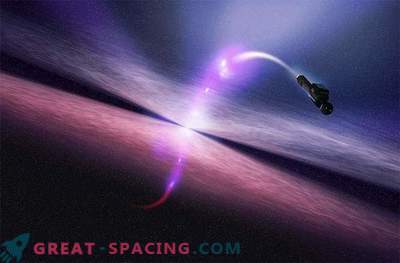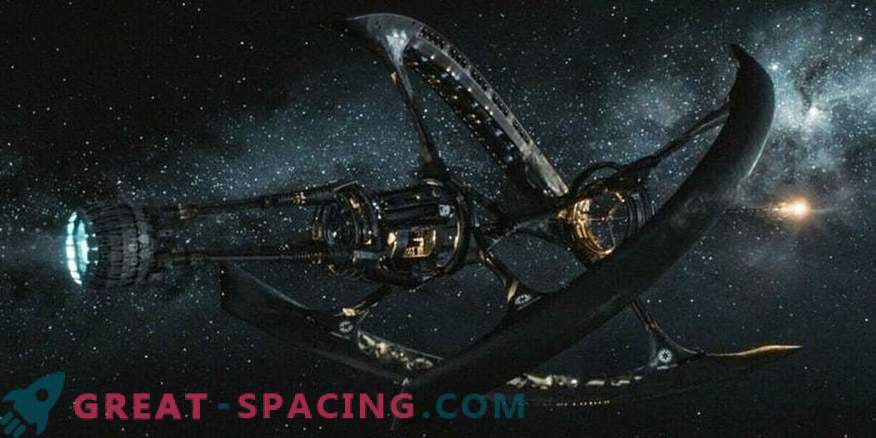
A science fiction film with Jennifer Lawrence and Chris Pratt demonstrated an interstellar spacecraft transporting 5,000 people to a distant planet. And most of the principle of the functioning of a starship is based on scientific facts.
The film “Passengers”, released on December 21, explores the characteristics and dangers of interstellar travel. But can such a construction exist in reality?
The action takes place aboard the starship Avalon, which transports more than 5,000 people to a distant habitable planet.
The journey moves at half the speed of light, and everyone is in sleep mode for 120 years. But by chance someone wakes up 90 years earlier.
If anything remotely realistic in this ship? This question was posed to some space travel experts, as well as Guy Hendrix Diaz, the film's art director. He looked at the history of the spacecraft in the movies (including the transport vehicles from Star Trek and Star Warrior) to come up with something unique.
Ship Design
Avalon has three long and thin modules that cover a common center and rotate. Diaz said that he copied the design of seed plane. It turns out that the rotation also provides artificial gravity, like on the ships “Interstellar” and “2001: Space Odyssey”. The vessel is powered by eight nuclear fusion reactors and operates autonomously, controlling most systems, even with a sleeping crew.
The huge structure is about 1 km (0.62 miles) in length. Diaz thinks he has been assembled in space for decades. The film takes place at an uncertain moment in the future. But by that time, people should already be able to extract some of the materials from the asteroids or the moon in order to save on transportation costs. “I tried to design it as a cruise liner,” says Diaz. - “I put myself in the place of the one who creates such a device. Therefore you see so many colors and textual changes. ”
This approach led Diaz to develop functional areas (such as the dining area) in stainless steel, while the stylish passenger pub is decorated in orange, gold and red.
Hibernation compartments occupy large rooms. Crew dozes in separate rooms, inaccessible to passengers. The compartments are collected in small clusters, so that if a trouble occurs with one group, others will not be affected theoretically.
The hibernation procedure is not described in the film, and we see only what happens after: the passengers are reassured by a holographic figure explaining where they are. They are escorted to the elevator, and then sent to an individual cabin, where they can rest after four months of travel. During breaks, they communicate with the rest in the dining room, pool, bar, common room.
Sleep
Although it has been shown that people can sleep for decades, in reality there is no such technology. However, there are situations where the patient is placed in a coma with cooling salt solutions for several days, which will allow injuries to heal faster.
In 2015, SpaceWorks received a grant from NASA to explore the possibility of extending the induced state. Engineer John Bradford, the company's chief operating officer, said that such a state was possible only on condition that mammals could spend the winter for several months.
“We are not trying to extend human life,” he said. So this technology is different from the movie version. But otherwise, the film demonstrates what the company seeks. “We are trying to place people in a small container to minimize the cost of mass and power, as well as consumables during a space flight,” he said, adding that during a six-month journey to Mars, the required amount of food can be reduced by hibernation. Not to mention the fact that it will relieve the crew from boredom.
What about exercise? Bradford said that there is an opportunity to preserve the astronaut's muscle mass with the help of neuromuscular stimulation with electricity. Positive results have already been observed in experiments on comatose patients.
Bradford is glad that the film focused on hibernation, showing disoriented passengers, which corresponds to the real state after a long sleep.
Interstellar engine
Nuclear fusion is a possible source of thrust for ships. But the problem is the size of the reactors that must be assembled in space or launched there. Therefore, different methods are considered to assemble the apparatus at interstellar velocities.
One idea belongs to Philip Lubin, a professor of physics from the University of California, offering lasers. He developed the concept of a directional energy engine for an interstellar scout, which generates a push from laser photons reflected in a mirror. At the end, it is planned to create an apparatus capable, like in “Passengers,” to move with a significant part of the speed of light.
The engine on antimatter - another option for refueling. So says Andreas Tsiolas, co-founder and president of Icarus Interstellar. This is the “opposite” to ordinary particles of matter. They have the same mass, but differ in electric charge. When matter and antimatter collide, they release energy. “Such energy generates a large number of photons,” he says. “All matter is destroyed and transformed into pure photon energy. However, they are hard to grasp. ”
Perhaps the ship in the film is fueled by the interstellar medium - a discharged set of hydrogen particles. This concept was proposed in 1960 by American physicist Robert Bussard, who claims that it will allow traveling without the need to transport fuel.
But there is a problem. Sci-fi author Jeffrey Landis says that at that time scientists discovered that the environment was too thin to be merged.
“The idea was to get rid of a huge fuel tank,” he said. The concept was thrown away, but another problem remained: how to achieve an incredible speed with so much fuel on board.
Landis agreed that a ship of this size should be built in space and for him to extract materials from the asteroid.
Although the concept is still under development, there are already companies that have begun research. Deep Space Industries and Planetary Resources have made plans for the exploration of nearby asteroids to find out about their composition, as well as the possibilities of locating spacecraft. The mining technology is still at an early stage, but both companies perform other operations (Earth observation), which received support from customers.
Creating an economic base will take some time. But Landis said that there is a real chance to create a ship from extraterrestrial resources.
“In the long run, if we are building a giant habitat, then we need to extract materials in space,” he says. - “And it can be done. Millions of asteroids fly there, from which you can assemble a ship, instead of drilling another well on our planet. ” Ship Design
Landis is also pleased that Avalon creates gravity during rotation.
“I'm tired of artificial gravity in movies,” he says, referring to Star Trek.
The experts agreed that the ship took into account the human factor. That is, they built a place where people can comfortably live and work.
An example is the design. Even on the International Space Station, there is only a sterile gray interior with icons and pictures from past crew members. Astronauts can decorate their rooms with photographs, so as not to forget about the house. So the choice of decor in Diaz plays a huge role for comfort.
After the first screening of the film, Tsziolas said that Avalon was similar to the concept that Icarus Interstellar had proposed for an interstellar spacecraft. The Hyperion project is also a cruise ship for 5,000 passengers, based on a rotational design for artificial gravity.
He likes the fact that Hollywood is getting closer to the reality of space travel.
So can such a ship really exist? Experts agree that many parts of the design meet the scientific requirements, but still there is a question about how such a massive ship would manage to make an interstellar journey.








